Here, all of reality is on his side: in this dense quilted blue of his, in his red, and his shadowless green, and the reddish black of his wine bottles.
Rainer Maria Rilke to Clara Rilke
Finally, Cézanne. After the long detour of yesterday’s letter, Rilke faces this new reality head-on, without further delays.
He says so much in a single sentence that I had to add four paintings to re-create it in images. These might not be the exact same paintings he saw on that day, but he isn’t really writing about individual paintings, but rather about all of them simultaneously.
OCTOBER 7, 1907
You know how much more remarkable I always find the people walking about in front of paintings than the paintings themselves. It’s no different in this Salon d’Automne, except for the Cézanne room.
Here, all of reality is on his side: in this dense quilted blue of his,
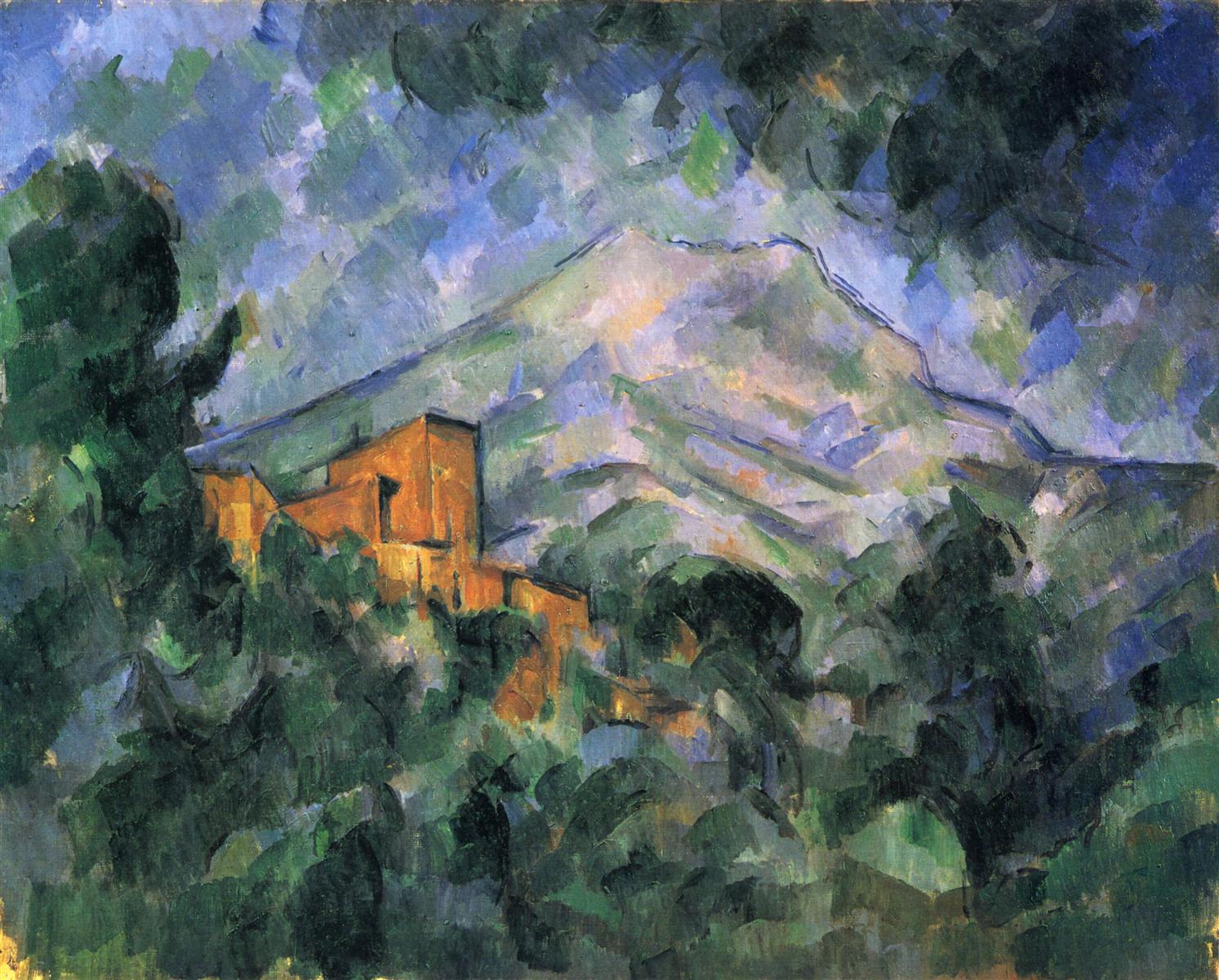
in his red
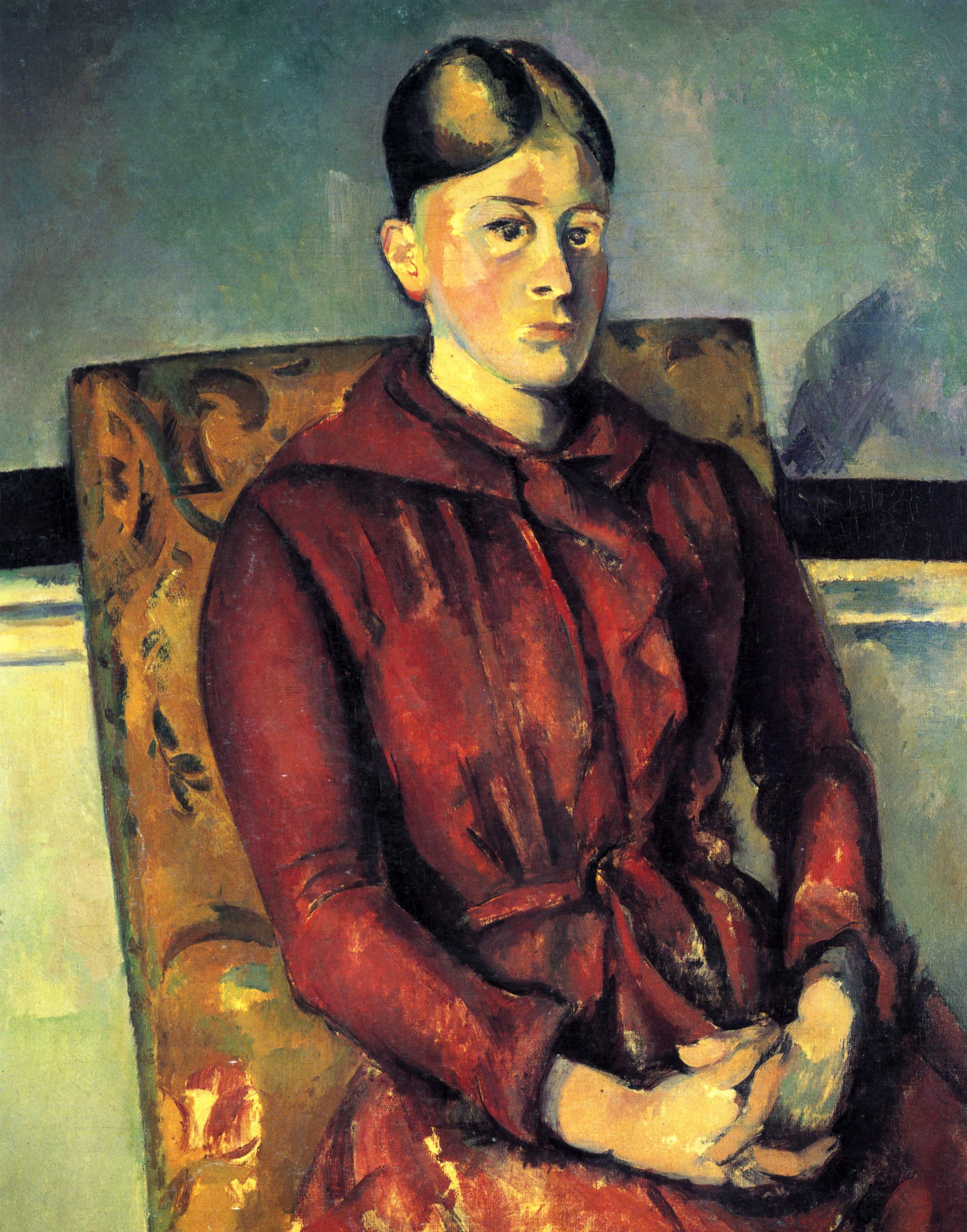
and his shadowless green
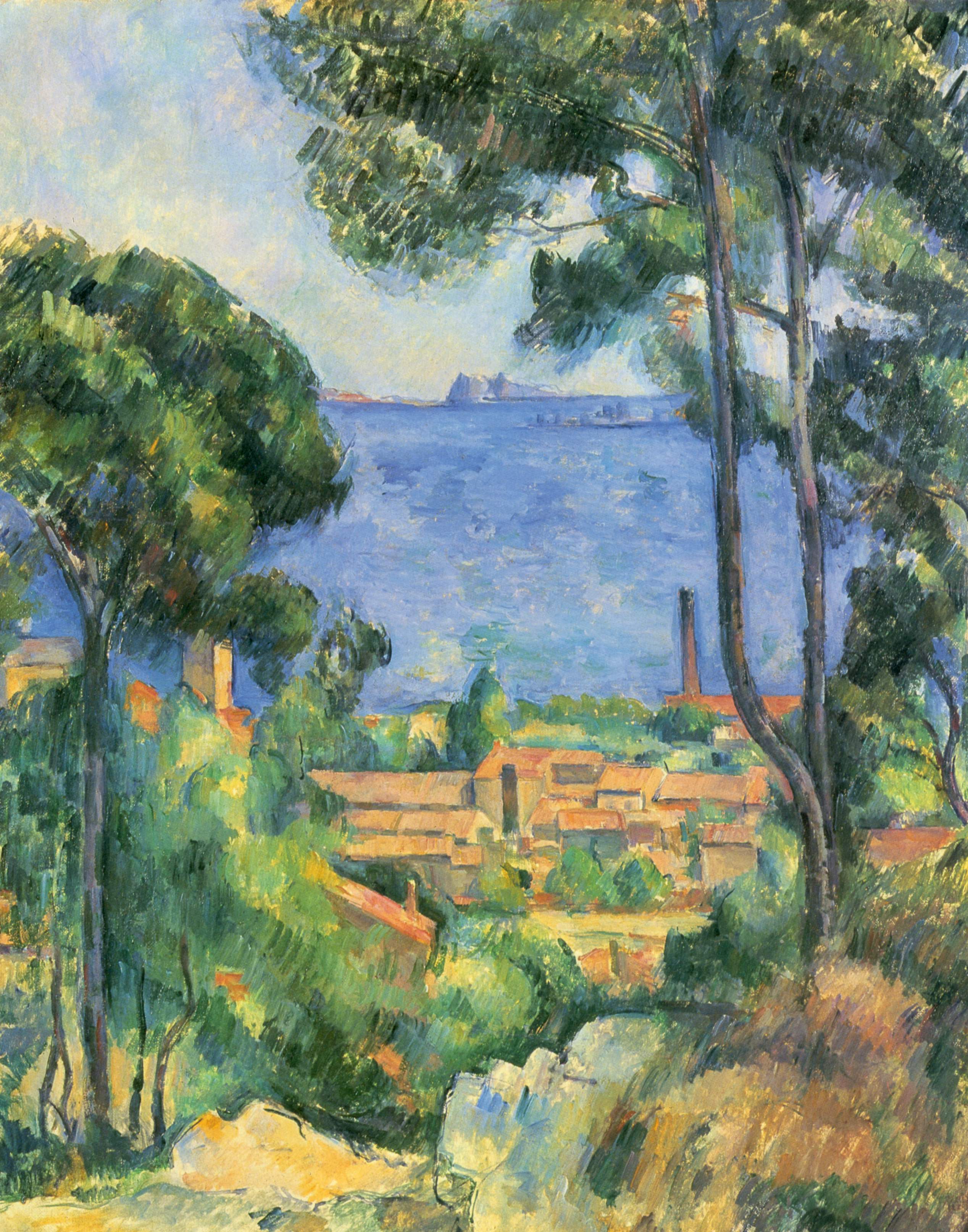
and the reddish black of his wine bottles.
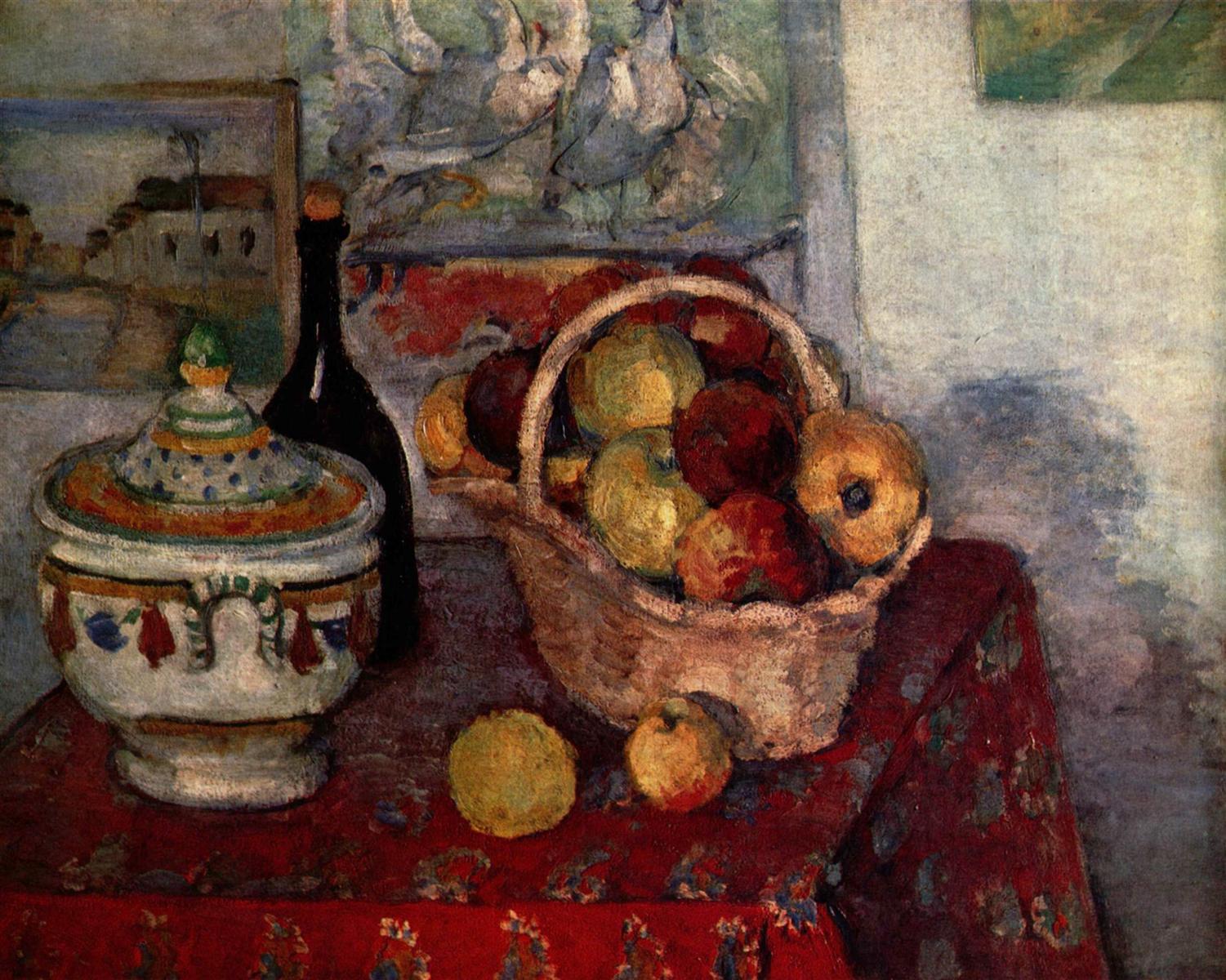
And the humbleness of all his objects: the apples are all cooking apples and the wine bottles belong in the roundly bulging pockets of an old coat.
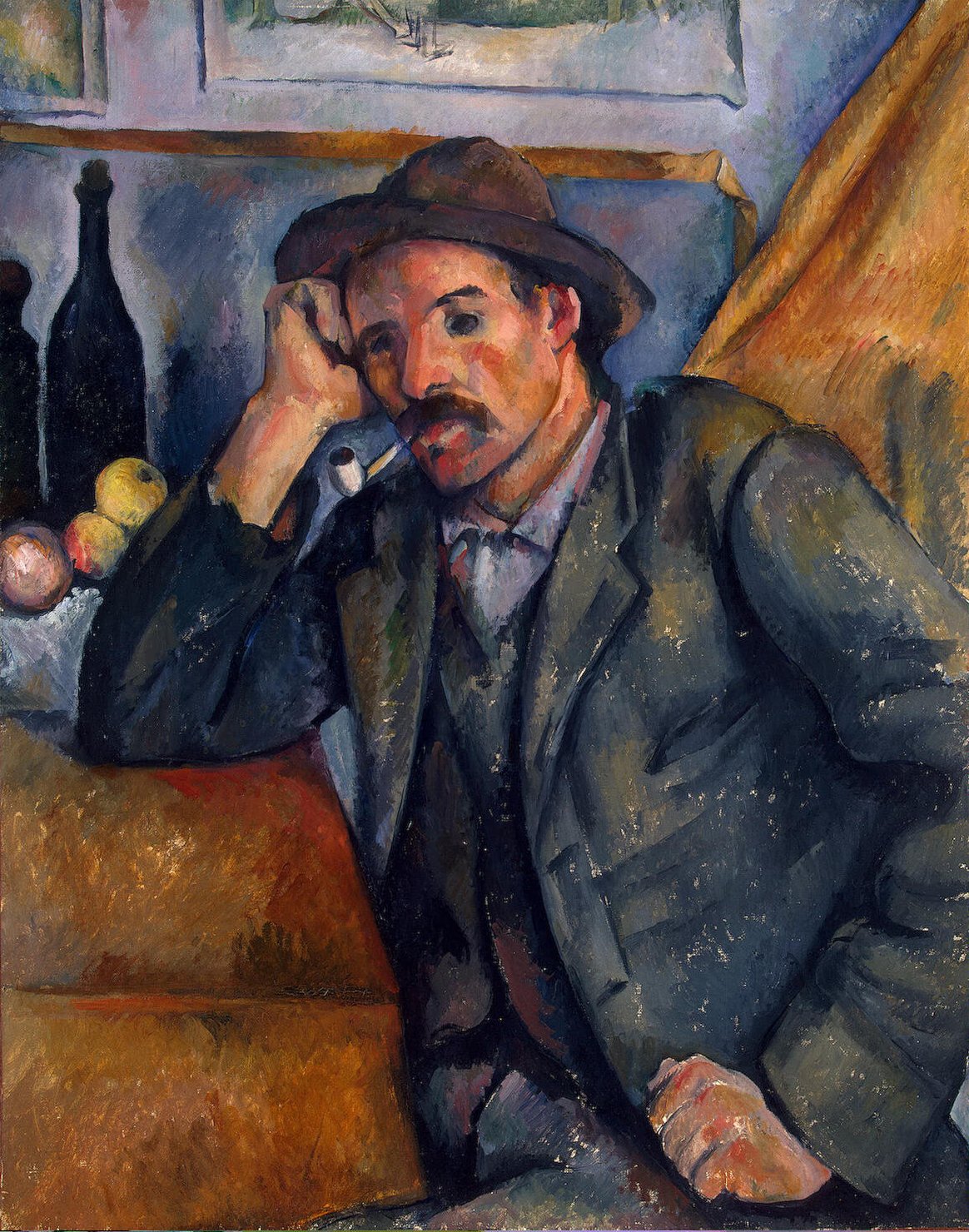
Rainer Maria Rilke to Clara Rilke
STORYLINE: COLORs and WORDS
How can one make landscapes and things out of WORDS as Cézanne made them out of colors?
This challenge is implicitly always there in the letters, and one way Rilke faces it is through finding new ways of naming the colors themselves.
This letter is a tentative beginning of what would blossom into color-filled prose by the end of the month.
SEEING PRACTICE: COLOR BLUE
I have chosen one painting for each color mentioned in Rilke’s letter, but my choice may be arbitrary and subjective. ALL Cézanne’s colors are there in every painting, but in very different versions of themselves.
I wonder what Rilke really meant, and Clara Rilke saw in her mind’s eye when she read this phrase, “this dense quilted blue of his“. There are many different blues even in the paintings included here.
What came up in my mind’s eye was this very specific kind of blue, the blue of the sky above Mont Sainte-Victoire and Château Noir (1904-1906), spilling into the folds of this painting’s mountain, and into the shadows of its greenery.

But I wonder, can this phrase also point to ALL of Cézanne’s blues, to something they all share?